What is a Sensor?
A sensor is a component or device that converts collected information into signals that can be processed by equipment. Just as humans take action based on information obtained through vision, hearing, smell, and touch, devices also control or process based on information obtained from sensors.
Sensors collect and convert signals (physical quantities) such as temperature, light, color, air pressure, magnetic force, speed, acceleration, etc. These utilize changes in semiconductor materials, and there are also biosensors that use biological materials such as enzymes and microorganisms.
IoT and Sensors
The Internet of Things (IoT) connects all objects to the internet. This includes not only communication devices like smartphones and personal computers but also medical devices, wearable devices, automotive systems, natural environments, and infrastructure. All objects can connect to share information, creating a more convenient, secure, and safe society. Essential to achieving this is the “sensor” that detects status.
-
IoT: Internet of Things refers to the state where sensors are embedded in surrounding objects for networking, enabling communication between objects and between objects and people.
-
Industry 4.0: A concept proposed by the German government aimed at enhancing the intelligence level of manufacturing, it is a national project promoted jointly by industry, government, and academia. The new concept aims to create new value through factory IoT.
-
M2M: Machine to Machine refers to direct communication between objects without human mediation.
-
P2M: People to Machine communication; M2P: Machine to People communication.
-
Industrial Internet: A strategy for industrial IoT advocated by General Electric (GE).
Geomagnetic Sensor
The Earth is surrounded by a magnetic field, known as geomagnetism. The geomagnetic sensor detects the Earth’s magnetic force and is also known as an “electronic compass.” It can detect direction by sensing geomagnetism.
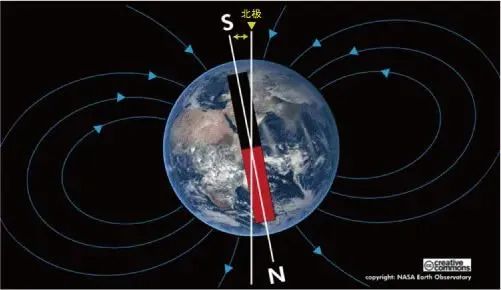
The geomagnetic sensor comes in X and Y axis types as well as a three-axis type with the addition of Z, measuring magnetic force values in each direction. When ignoring inclines, only the values of the X and Y axes are used. When considering inclines, the three-axis values of the geomagnetic sensor need to be combined with the accelerometer to correct to the correct direction.
The following diagram shows the distribution of X and Y values when the geomagnetic sensor rotates horizontally..
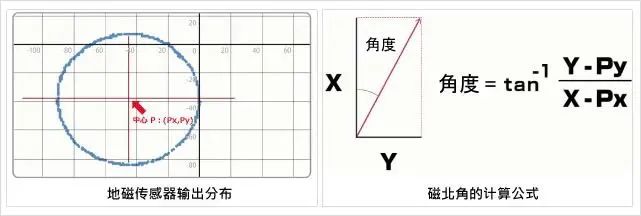
If the geomagnetic sensor rotates horizontally, in an ideal case without external magnetic field interference, the center of the output distribution map becomes zero. However, in reality, the center shifts due to the influence of the environmental magnetic field, so adjustments are needed to move the center to zero.
The north pole derived from the geomagnetic sensor is called magnetic north (slightly deviated from true north). By calculating the angle of this magnetic north using the above equation, one can easily determine direction.
Types of Magnetic Sensors
Magnetic sensors are designed to measure the magnitude and direction of magnetic fields. There are various sensors based on different purposes, and the following are typical sensors.
-
Hall Sensor: A sensor that measures magnetic flux density based on the Hall effect, outputting a voltage proportional to the magnetic flux density. It is easy to use and primarily used for non-contact switch applications, such as detecting the opening and closing of doors and laptops.
-
MR Sensor: The MR (Magneto Resistance) sensor, also known as a magnetoresistance sensor, measures the magnitude of geomagnetism by utilizing changes in the resistance of an object due to magnetic fields. Its sensitivity is higher than that of Hall sensors and it consumes less power, making it a more widely used magnetic sensor. Besides applications like electronic compasses for geomagnetic detection, it is also used in motor rotation and position detection applications.
-
MI Sensor: The MI (Magneto Impedance) sensor is the next generation of magnetic sensors, utilizing special amorphous wire and applying the magnetoimpedance effect. Its sensitivity is over 10,000 times higher than that of Hall sensors and can measure minute changes in geomagnetism with high precision. It can be applied to ultra-low current consumption orientation detection (electronic compass) and also has applications in indoor positioning and metal foreign object detection due to its high sensitivity characteristics.
Pulse Sensor
The pulse wave is the waveform of volume changes in blood vessels caused by the heart sending blood, and the detector that monitors this volume change is called a pulse sensor.
There are four methods to measure heart rate: electrocardiogram, photoplethysmography, blood pressure measurement, and phonocardiography. Among these, the photoplethysmography method uses pulse sensors for measurement.

Due to different measurement methods, there are two types of photoplethysmography pulse sensors: transmission type and reflection type. The transmission type measures the change in blood flow that varies with the heartbeat by irradiating infrared or red light onto the surface of the body, measuring the change in light passing through the body. This method is limited to areas easy to penetrate, such as fingertips and earlobes.
Reflection Type Pulse Sensor
The reflection type pulse sensor irradiates the body with infrared light, red light, and green light of about 550nm wavelength, using a photodiode or phototransistor to measure the light reflected from the body. Oxygenated hemoglobin present in arterial blood absorbs incoming light, thus measuring the pulse signal by detecting the change in blood flow (volume change of blood vessels) that varies over time with the heartbeat. Additionally, since it measures reflected light, it is not limited to measurement sites like the transmission type.

When measuring pulse waves using infrared or red light, it is affected by the infrared light contained in outdoor sunlight, making stable pulse wave measurements impossible. Therefore, it is recommended to use it only for indoor or semi-indoor applications. For outdoor uses like sports watches, the absorption rate of hemoglobin in blood is high, and since green light sources are less affected by ambient light, green LEDs are used as the irradiating light.
Applications of Pulse Sensors
Typically, arterial blood oxygen saturation (SpO2) can be measured by observing the following two points. The periodic change of the waveform obtained from the pulse sensor is used to observe heart rate (pulse rate); using both infrared and red light wavelengths to observe the pulsation (variation).
Additionally, as an application of pulse sensors, it is expected to obtain various vital signs such as HRV analysis (stress level), vascular age, etc., through high-speed sampling and high-precision measurement.

Pressure Sensor
A pressure sensor is a sensor that detects atmospheric pressure. Depending on the pressure value to be measured, pressure sensors have various materials and methods as shown. Among these pressure sensors, the sensors used for atmospheric pressure detection are commonly referred to as pressure sensors.
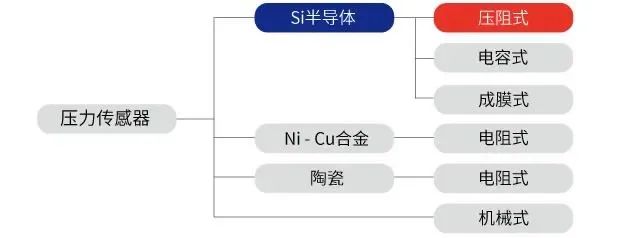
A typical example of a pressure sensor is a piezoresistive sensor using silicon (Si).
Piezoresistive Pressure Sensor

The piezoresistive pressure sensor uses a single crystal Si diaphragm (pressure receiving element), forming a resistive bridge circuit by diffusing impurities on its surface, and calculates pressure (atmospheric pressure) by measuring the change in resistance value caused by deformation when pressure is applied.
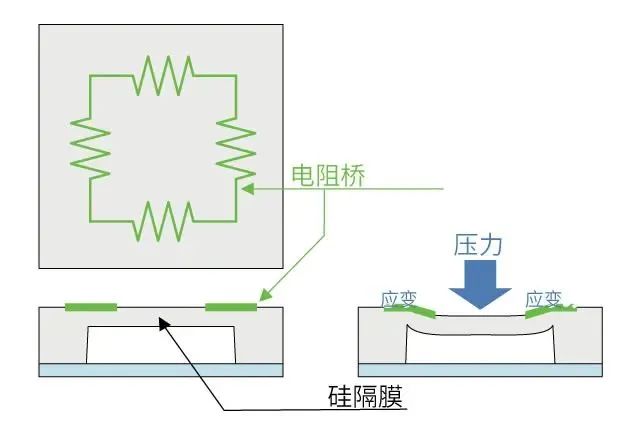
The phenomenon where resistivity (conductivity) changes due to pressure applied to the resistor is called the piezoresistive effect. The pressure sensor IC from Rohm will use a piezoresistive pressure receiving element (diaphragm structure and piezoresistor integrated with MEMS), and integrate temperature correction processing, control circuits, and other integrated circuits (ASIC) into one package, allowing for easy acquisition of high-precision pressure information.
-
MEMS: Micro Electro Mechanical System integrates mechanical components, sensors, actuators, and other devices on a single circuit board.
-
ASIC: Application Specific Integrated Circuit is an integrated circuit that combines multiple circuit functions for a specific application.
Accelerometer
Acceleration refers to the speed generated in a unit time, and the IC that measures acceleration is called an accelerometer. By measuring acceleration, information such as the tilt and vibration of an object can be obtained. The unit of acceleration is m/s2 (SI unit system). Additionally, the unit G is the acceleration value based on standard gravity (1 G = 9.80665 m/s2). There is also the unit Gal (CGS unit system) used for detecting seismic vibrations.
-
The International System of Units (SI) consists of length m, weight kg, and time s (MKS units).
-
Standard gravity: The acceleration generated by an object under the influence of gravity. The increase in speed of an object in free fall per unit time (9.80665 m/s2).
-
Gal: The acceleration unit of the CGS (centimeter, gram, second) unit system. Defined as 1/100 of the SI unit (1 Gal = 0.01 m/s2).
Accelerometers are generally divided into low-G accelerometers and high-G accelerometers, as shown in the following figure..
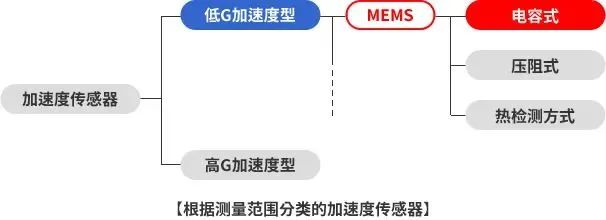
Capacitive Accelerometer

The sensor element consists of fixed electrodes made of Si, movable electrodes, and springs. In the state without applied acceleration, the distance between the fixed and movable electrodes is the same. When acceleration is applied, the movable electrode shifts. This changes the positional relationship with the fixed electrode, causing a change in capacitance. The change in capacitance is converted to voltage by the ASIC, calculating acceleration.
-
ASIC: Application Specific Integrated Circuit refers to an integrated circuit that integrates multiple circuit functions for specific purposes.
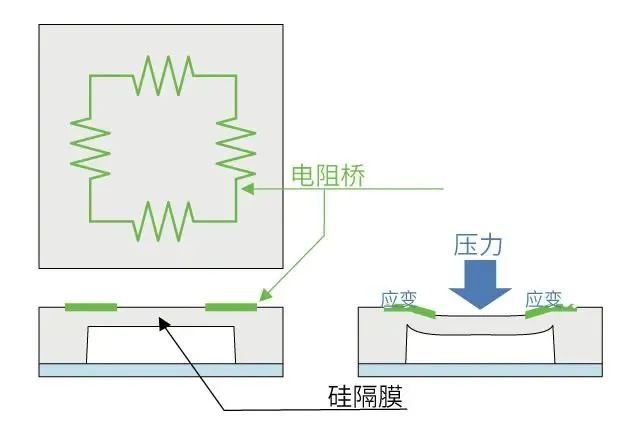
Current Sensor
What is a current sensor? A current sensor is a sensor that detects the current value flowing in a circuit.
Methods of Current Detection

As shown in the figure, methods for detecting flowing current can be roughly divided into resistive detection type and magnetic field detection type.
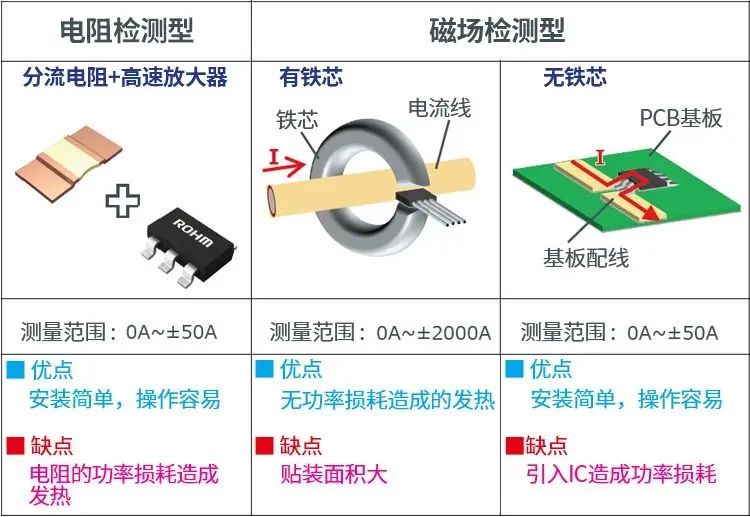
The resistive detection type converts the voltage drop caused by a shunt resistor into current. It is easy to install and cost-effective, but the downside is that the power loss on the resistor generates significant heat. The magnetic field detection type
measures the size of the magnetic field generated in the iron core by the current flowing through the current line to measure the current value. This method requires no contact and has lower power loss, but the iron core is large, posing a challenge for mounting area.
Utilizing the Hall effect, it converts the magnetic field generated around the flowing current into voltage (Hall voltage) to measure the current value. Since the voltage generated by the Hall effect is small, the IC consists of Hall elements and amplifying circuits. Since it is necessary to introduce the current into the IC, power loss will occur.
M1 Current Sensor

To eliminate the aforementioned difficulties of the magnetic field detection type (with iron core) and power loss (without iron core), ROHM has developed a non-contact current sensor using MI (Magneto Impedance) elements.
The MI sensor, which uses special amorphous wire and utilizes its magnetoimpedance effect, features ultra-high sensitivity for magnetic detection. Its sensitivity far exceeds that of Hall elements, allowing for high-precision detection of minute changes in magnetism. Therefore, it can perform non-contact current detection (magnetic detection) with high precision without needing to introduce current into the package.

In summary, the MI current sensor can perform non-contact current measurement, has low power loss, and can further reduce the mounting area.
Color Sensor
A light sensor (photo sensor) that detects the three primary colors R (red), G (green), and B (blue) is called a color sensor. The color sensor receives surrounding light through photodiodes, detecting RGB values.
Principle of Color Sensor

When light with RGB components is irradiated onto an object, the color components of the reflected light change with the color of the object. For example, the reflected light component of a red object is red, a yellow object contains red and green, and white contains all red, green, and blue components.

From this, it can be seen that the color of an object is determined by the proportion of the reflected light color (R, G, B) components. The human eye recognizes the color of an object by obtaining the reflected light components. In complete darkness, nothing can be seen! This is because there is no irradiated light, and naturally, there is no reflected light, making it appear completely dark. Like the human eye, the color sensor uses photodiodes to receive light, recognizing color by calculating the proportion of R, G, and B amounts received.
Structure of Color Sensor IC
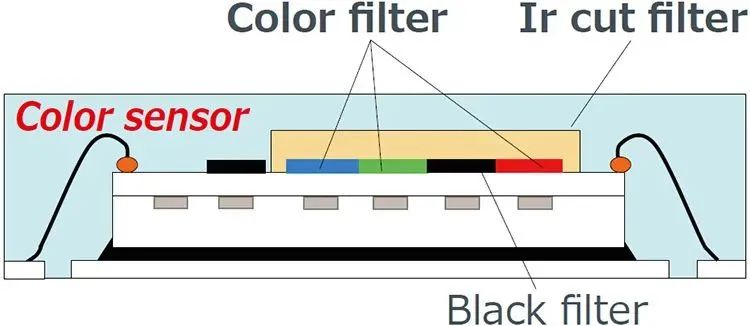
The following diagram shows the structure of the color sensor IC. It is equipped with a color filter and an infrared cut filter internally.
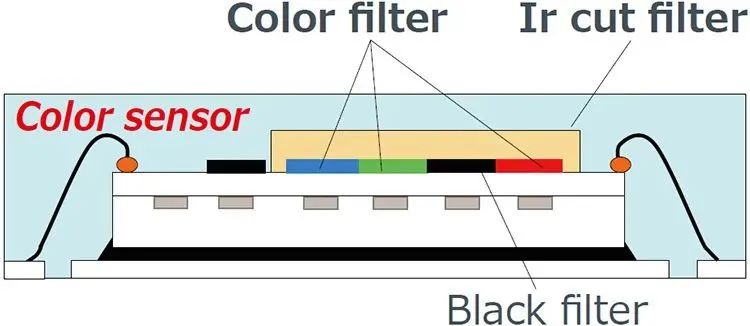
The following compares the spectral characteristics of sensors with and without these filters.
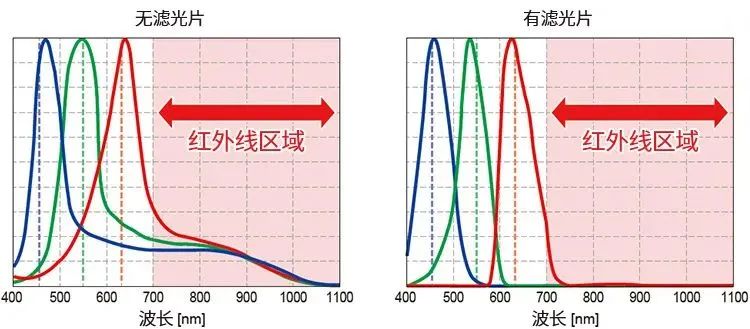
The color sensor IC, equipped with R, G, and B filters for the internal sensor, possesses high RGB spectral characteristics, and by equipping an infrared cut filter, it has infrared removal characteristics, enabling high-precision color recognition.
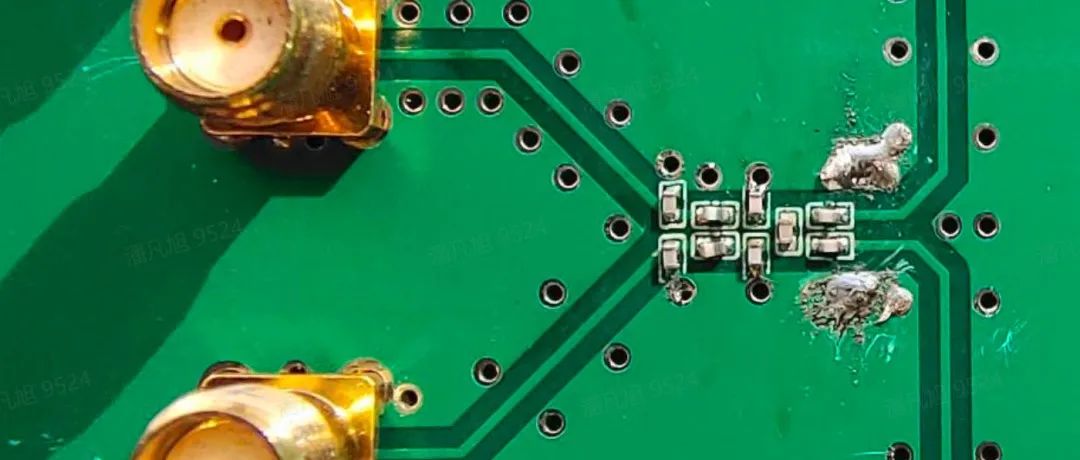
How to Improve Antenna Isolation?

What are the Dilemmas and Improvements in RF Circuit PCB Design?

Scan to add customer service WeChat, note “Join Group” to pull you into the official technical WeChat group of Fanyi Education to discuss technical issues and experiences with many electronic technology experts~
